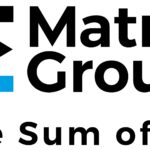 by Bobby Amm, executive officer of the Commercial Producers Association of South Africa (CPA)
by Bobby Amm, executive officer of the Commercial Producers Association of South Africa (CPA)
An ad agency’s In-House Production Company (IHPC) can be a tempting choice when looking for a commercial producer. With the ‘lower costs’ and the convenience of a single supplier, most business people would consider it, especially when production costs are so high for low-end work. On closer inspection, though, the Commercial Producers Association has found that any benefit of engaging the services of an IHPC on mid-to-high-end projects is short-lived.
And this is why:
- It’s non-competitive and lowers quality.
When using a professional commercial production company, clients can commission the best creative professionals in the market, with more than 100 directors available in South Africa.
When using an IHPC, though, one’s options are limited – especially since an IHPC director is already employed. This is a difficult situation for clients, because the IHPC is likely to recommend its in-house director rather than the best professional for the project.
In terms of competition, the most debated predicament is that agencies with IHPCs often play the roles of both service provider and client; calling for pitches from production houses, and pitching their own treatments for the same job. Because of the high chance of bias in these cases, many production houses remove themselves from the race for these jobs. This diminishes competition, and with fewer producers pitching, it impacts on quality.
The traditional relationship between agencies and commercial production companies also improves the quality of the product. By repeatedly pushing production houses to do more, agencies often deliver a better commercial at no extra cost to themselves. But, when an agency carries the expense of that production pressure itself, one speculates whether the agency would push as hard.
- It doesn’t cost less in the long run.
An IHPC may look cost-effective now. But once it’s functioning at a similar level as a commercial production company, its business expenses will probably rise. Why? Because a production company has less downtime and superior efficiencies of scale thanks to it working with multiple clients at once. An IHPC, on the other hand, only produces for itself.
IHPCs have put an enormous strain on production companies, compelling some to downsize or even shut down. With fewer production houses competing in the industry, a lower commercial production standard could present itself across the board. But this isn’t just a quality issue… Less competition also means higher expenses for the client.
As Steve Davies, CEO of the Advertising Producers Association in London said at this year’s Advertising Week, “In any over-competitive market you cannot put your prices up. You have to bid as low as you can to win the work. That’s what clients should take confidence from.”
- It’s smothering the entire industry.
We live in difficult economic times, so it’s only natural that agencies want to diversify for financial reasons. But if you take a deeper look, the IHPC model is unsustainable as the leverage only lasts as long as production houses do. If the competition dies out, the costs balance out (or escalate) and the overall standard is lower; disarming the industry.
Production houses are also key developers of new talent as they invest in fledgling directors and other production professionals: teaching them, and helping them grow their careers. With financial results in mind rather than the overall industry, the IHPC approach doesn’t provide the same level of encouragement and the investment in the market falls away entirely.
Competing in an evolving market
The commercial production industry is continuously working to stay up-to-date and competitive in a changing market. Some production companies have had to close their doors because of a refusal to reconsider their business models, so keeping up in this changing market should be of high importance.
However, in a world where large corporations are saving costs by outsourcing their non-core services to experts, it seems regressive, and even perilous, for the commercial production industry to be hauled the ‘wrong’ way by agencies trying to make a quick buck.
- Top 50 DSTV TV programmes – October 2024 - 12th November 2024
- Top 50 FTA TV programmes – October 2024 - 12th November 2024
- The Latest MAPS™ Data: A Comprehensive Look at Consumer Behaviour - 12th November 2024




